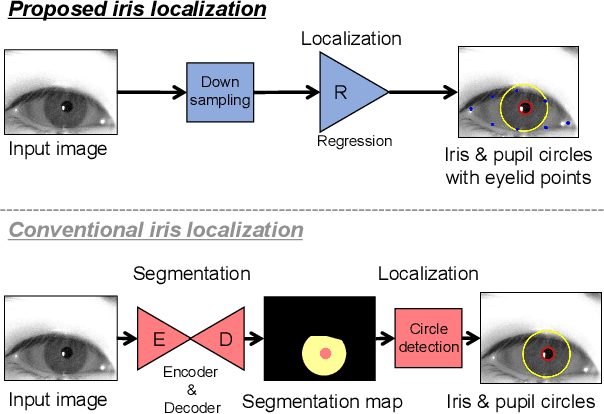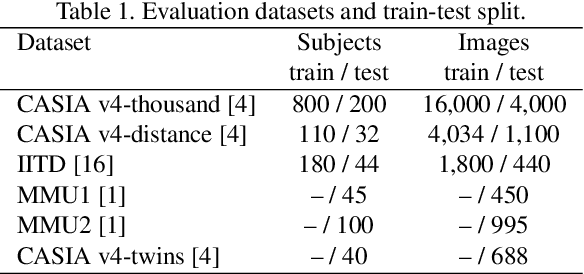Koichi Takahashi
Perspective on Utilizing Foundation Models for Laboratory Automation in Materials Research
Jun 14, 2025Abstract:This review explores the potential of foundation models to advance laboratory automation in the materials and chemical sciences. It emphasizes the dual roles of these models: cognitive functions for experimental planning and data analysis, and physical functions for hardware operations. While traditional laboratory automation has relied heavily on specialized, rigid systems, foundation models offer adaptability through their general-purpose intelligence and multimodal capabilities. Recent advancements have demonstrated the feasibility of using large language models (LLMs) and multimodal robotic systems to handle complex and dynamic laboratory tasks. However, significant challenges remain, including precision manipulation of hardware, integration of multimodal data, and ensuring operational safety. This paper outlines a roadmap highlighting future directions, advocating for close interdisciplinary collaboration, benchmark establishment, and strategic human-AI integration to realize fully autonomous experimental laboratories.
Universal AI maximizes Variational Empowerment
Feb 20, 2025Abstract:This paper presents a theoretical framework unifying AIXI -- a model of universal AI -- with variational empowerment as an intrinsic drive for exploration. We build on the existing framework of Self-AIXI -- a universal learning agent that predicts its own actions -- by showing how one of its established terms can be interpreted as a variational empowerment objective. We further demonstrate that universal AI's planning process can be cast as minimizing expected variational free energy (the core principle of active Inference), thereby revealing how universal AI agents inherently balance goal-directed behavior with uncertainty reduction curiosity). Moreover, we argue that power-seeking tendencies of universal AI agents can be explained not only as an instrumental strategy to secure future reward, but also as a direct consequence of empowerment maximization -- i.e.\ the agent's intrinsic drive to maintain or expand its own controllability in uncertain environments. Our main contribution is to show how these intrinsic motivations (empowerment, curiosity) systematically lead universal AI agents to seek and sustain high-optionality states. We prove that Self-AIXI asymptotically converges to the same performance as AIXI under suitable conditions, and highlight that its power-seeking behavior emerges naturally from both reward maximization and curiosity-driven exploration. Since AIXI can be view as a Bayes-optimal mathematical formulation for Artificial General Intelligence (AGI), our result can be useful for further discussion on AI safety and the controllability of AGI.
The Future of Fundamental Science Led by Generative Closed-Loop Artificial Intelligence
Jul 09, 2023



Abstract:Recent advances in machine learning and AI, including Generative AI and LLMs, are disrupting technological innovation, product development, and society as a whole. AI's contribution to technology can come from multiple approaches that require access to large training data sets and clear performance evaluation criteria, ranging from pattern recognition and classification to generative models. Yet, AI has contributed less to fundamental science in part because large data sets of high-quality data for scientific practice and model discovery are more difficult to access. Generative AI, in general, and Large Language Models in particular, may represent an opportunity to augment and accelerate the scientific discovery of fundamental deep science with quantitative models. Here we explore and investigate aspects of an AI-driven, automated, closed-loop approach to scientific discovery, including self-driven hypothesis generation and open-ended autonomous exploration of the hypothesis space. Integrating AI-driven automation into the practice of science would mitigate current problems, including the replication of findings, systematic production of data, and ultimately democratisation of the scientific process. Realising these possibilities requires a vision for augmented AI coupled with a diversity of AI approaches able to deal with fundamental aspects of causality analysis and model discovery while enabling unbiased search across the space of putative explanations. These advances hold the promise to unleash AI's potential for searching and discovering the fundamental structure of our world beyond what human scientists have been able to achieve. Such a vision would push the boundaries of new fundamental science rather than automatize current workflows and instead open doors for technological innovation to tackle some of the greatest challenges facing humanity today.
Scenarios and branch points to future machine intelligence
Mar 02, 2023Abstract:We discuss scenarios and branch points to four major possible consequences regarding future machine intelligence; 1) the singleton scenario where the first and only super-intelligence acquires a decisive strategic advantage, 2) the multipolar scenario where the singleton scenario is not technically denied but political or other factors in human society or multi-agent interactions between the intelligent agents prevent a single agent from gaining a decisive strategic advantage, 3) the ecosystem scenario where the singleton scenario is denied and many autonomous intelligent agents operate in such a way that they are interdependent and virtually unstoppable, and 4) the upper-bound scenario where cognitive capabilities that can be achieved by human-designed intelligent agents or their descendants are inherently limited to the sub-human level. We identify six major constraints that can form branch points to these scenarios; (1) constraints on autonomy, (2) constraints on the ability to improve self-structure, (3) constraints related to thermodynamic efficiency, (4) constraints on updating physical infrastructure, (5) constraints on relative advantage, and (6) constraints on locality.
Segmentation-free Direct Iris Localization Networks
Oct 19, 2022



Abstract:This paper proposes an efficient iris localization method without using iris segmentation and circle fitting. Conventional iris localization methods first extract iris regions by using semantic segmentation methods such as U-Net. Afterward, the inner and outer iris circles are localized using the traditional circle fitting algorithm. However, this approach requires high-resolution encoder-decoder networks for iris segmentation, so it causes computational costs to be high. In addition, traditional circle fitting tends to be sensitive to noise in input images and fitting parameters, causing the iris recognition performance to be poor. To solve these problems, we propose an iris localization network (ILN), that can directly localize pupil and iris circles with eyelid points from a low-resolution iris image. We also introduce a pupil refinement network (PRN) to improve the accuracy of pupil localization. Experimental results show that the combination of ILN and PRN works in 34.5 ms for one iris image on a CPU, and its localization performance outperforms conventional iris segmentation methods. In addition, generalized evaluation results show that the proposed method has higher robustness for datasets in different domain than other segmentation methods. Furthermore, we also confirm that the proposed ILN and PRN improve the iris recognition accuracy.
 Add to Chrome
Add to Chrome Add to Firefox
Add to Firefox Add to Edge
Add to Edge